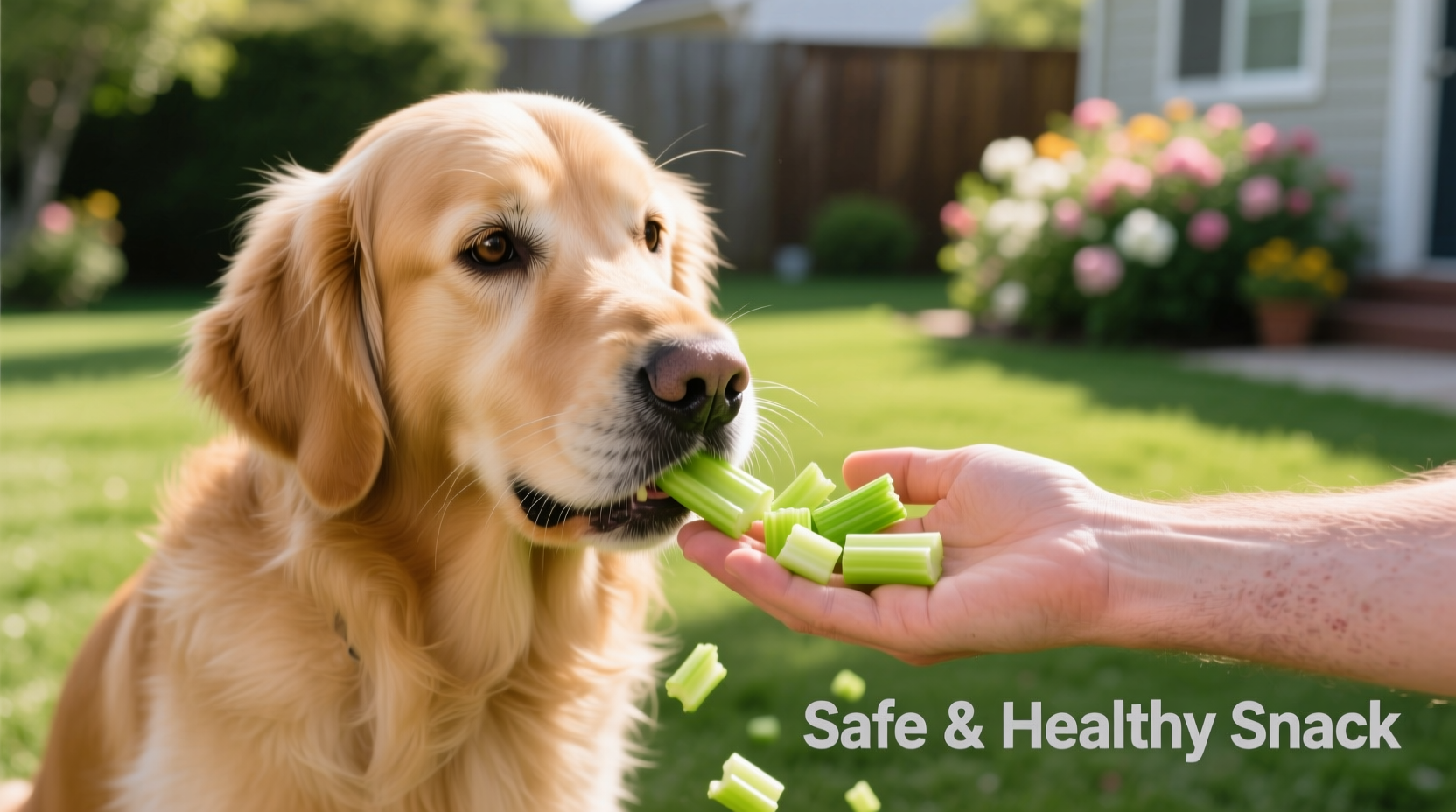Understanding Celery as a Canine Snack: What Pet Owners Need to Know
As a pet owner, you're likely always searching for healthy, natural treats to supplement your dog's diet. Celery often appears on "human foods safe for dogs" lists, but understanding the specifics is crucial for your pet's wellbeing. This comprehensive guide breaks down everything you need to know about feeding celery to dogs, backed by veterinary nutrition science.
The Nutritional Profile of Celery for Dogs
Celery's composition makes it an interesting option for canine snacking. With approximately 95% water content, it serves as an excellent hydrating treat, particularly valuable during warmer months or after exercise. The remaining 5% contains valuable nutrients that can complement your dog's regular diet when offered appropriately.
| Nutrient | Amount per 100g | Benefit for Dogs |
|---|---|---|
| Water | 95.4g | Hydration support, especially valuable in hot weather |
| Calories | 16 kcal | Low-calorie snack option for weight management |
| Fiber | 1.6g | Digestive health support in moderation |
| Vitamin K | 29.6μg | Supports blood clotting and bone health |
| Potassium | 260mg | Essential for muscle and nerve function |
Benefits of Celery for Canine Health
When properly prepared and served in appropriate portions, celery offers several potential benefits for dogs:
Natural Hydration Boost
The exceptionally high water content in celery makes it an excellent choice for keeping dogs hydrated, particularly during exercise or in warm weather. This natural hydration can be especially valuable for dogs who don't drink enough water on their own.
Low-Calorie Treat Option
With only about 6 calories per average stalk, celery serves as an ideal low-calorie treat for dogs needing weight management. According to the Association for Pet Obesity Prevention, over 50% of dogs in the United States are overweight or obese, making healthy treat alternatives essential.
Nutritional Supplement
Celery contains vitamins A, B, C, and K, along with minerals like potassium and folate. While not a replacement for balanced dog food, these nutrients can provide supplementary benefits when offered as occasional treats. The vitamin K content supports proper blood clotting and bone health, while potassium aids in muscle and nerve function.
Potential Risks and Safety Considerations
Despite its benefits, celery requires careful preparation and portion control to ensure canine safety. Understanding these limitations is crucial for responsible pet ownership.
Choking Hazard: Size Matters
The fibrous, stringy nature of celery presents a significant choking risk, particularly for small dog breeds. The American Kennel Club recommends cutting celery into small, bite-sized pieces (approximately 1/2 inch) to prevent airway obstruction. Never offer whole celery sticks to dogs, as they can become lodged in the throat.

Digestive Sensitivity
While celery's fiber content offers benefits, excessive amounts can cause digestive upset. The high fiber concentration may lead to gas, bloating, or diarrhea in sensitive dogs. Veterinary nutritionists recommend starting with very small portions (1-2 small pieces) and monitoring your dog's reaction before increasing the amount.
Special Considerations for Different Dogs
Certain canine populations require extra caution when introducing celery:
- Puppies: Their developing digestive systems are more sensitive; wait until they're at least 6 months old before offering small amounts
- Small breeds: Limit to 1-2 small pieces due to higher choking risk
- Dogs with kidney issues: Consult your veterinarian first due to celery's potassium content
- Dogs with sensitive stomachs: Introduce extremely gradually or avoid altogether
How to Safely Prepare Celery for Your Dog
Proper preparation transforms celery from a potential hazard into a safe, enjoyable treat. Follow these veterinarian-recommended steps:
Cleaning and Preparation Process
- Thoroughly wash celery to remove pesticides and contaminants
- Remove all leaves (they contain higher concentrations of certain compounds)
- Cut celery into 1/2 inch pieces to eliminate choking risk
- Consider steaming briefly for dogs with sensitive digestion
- Start with 1-2 small pieces to assess tolerance
Recommended Serving Sizes
Portion control is essential when feeding celery to dogs. The appropriate amount varies by size:
- Toy breeds (under 10 lbs): 1 small piece (1/2 inch)
- Small breeds (10-25 lbs): 2-3 small pieces
- Medium breeds (25-50 lbs): 3-4 small pieces
- Large breeds (50+ lbs): 4-5 small pieces
These portions should represent no more than 10% of your dog's daily caloric intake from treats.
When to Avoid Celery Completely
While celery is generally safe for most dogs, certain situations warrant complete avoidance:
- Dogs with a history of kidney stones (celery contains oxalates)
- Dogs with known celery allergies (rare but possible)
- Dogs with severe gastrointestinal disorders
- Puppies under 6 months of age
If your dog has any pre-existing health conditions, always consult your veterinarian before introducing new foods to their diet.
Healthy Alternatives to Celery
If your dog doesn't tolerate celery well or you're looking to diversify their vegetable treats, consider these safe alternatives:
- Cucumber slices (similar hydration benefits)
- Carrot sticks (cut small for chewing safety)
- Green beans (steamed for easier digestion)
- Blueberries (packed with antioxidants)
Remember that variety is important, but any new food should be introduced gradually to monitor for adverse reactions.
When to Consult Your Veterinarian
While occasional celery consumption is generally safe, contact your veterinarian if you notice any of these symptoms after your dog eats celery:
- Excessive vomiting or diarrhea lasting more than 24 hours
- Difficulty breathing or signs of choking
- Loss of appetite lasting more than 24 hours
- Unusual lethargy or weakness
For dogs with pre-existing health conditions, always get veterinary approval before introducing new foods to their diet.











 浙公网安备
33010002000092号
浙公网安备
33010002000092号 浙B2-20120091-4
浙B2-20120091-4